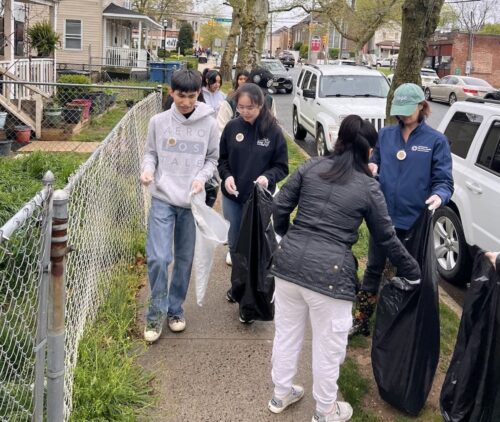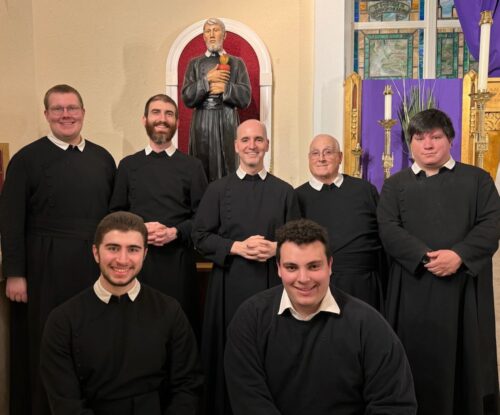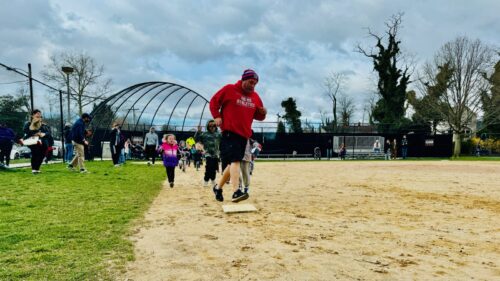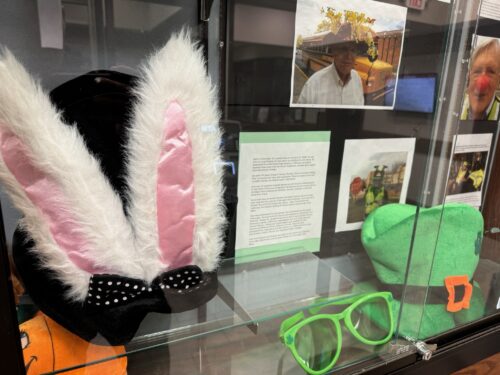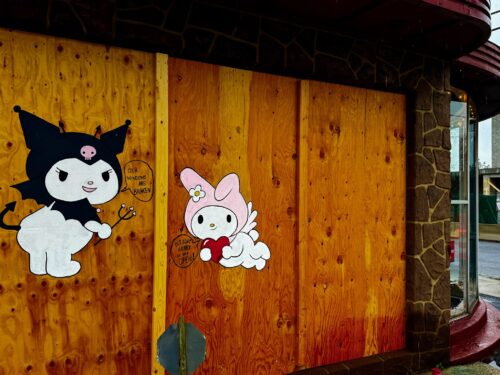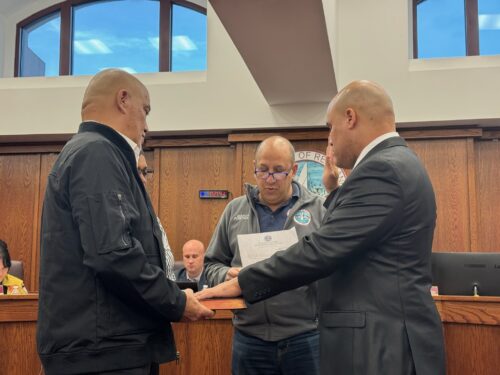Barbara Masterpalo and Rita Jurakovich were out for dinner with their respective significant others not too long ago when Jurakovich noticed Masterpalo’s rather striking handbag a deep leather satchel with a chainlike shoulder strap.
“I said, ‘That’s a beautiful bag,'” Jurakovich recalled recently. “And Barbara said, ‘Do you really think so? Well, I’ll tell you about it.'”
For starters, Masterpalo explained, it wasn’t just one bag but three, as it included two small clutches made from the same Italian leather. The shoulder strap was interchangeable as a necklace or belt, and there was a matching bracelet. And the smaller pouches could be attached to the wristlet, belt or necklace for hands-free carrying.
This, it was clear, was a bag with a lot going on, and Jurakovich, a purse fanatic who packs bags for every occasion when she travels, was impressed.
But then there was the bag’s provenance, a story too wild to be fiction. It turned out that Masterpalo, a self-employed accountant who’d never before tried her hand at fashion, had painstakingly designed the bag over several months, consulting with a design student over periodic meetings at a coffee shop in the Port Authority bus terminal in Manhattan. Then she had arranged for it to be custom-made for herself not with the idea of going into the handbag business, but simply to resolve a recurring problem she’d had with misplacing her own wallet.
Having achieved her aim, she planned to give copies of her creation away to her sisters and friends as gifts, and then call it quits.
Jurakovich, who owns and operates the Skinetics skin care and massage business on Maple Avenue, couldn’t believe what she was hearing. She’d known Masterpalo for years without having heard a peep about the purse. And here was Masterpalo telling her she was going to ignore what appeared to be a gold mine of a business idea.
“She wasn’t going to do anything with it!” says Jurakovich. “She’s so modest!” In fact, Masterpalo was so blase about her effort that she’d never thought to mention it to her own husband and sons.
“It’s not who I am,” Masterpalo says.
“I loved what I created,” she says, “but it’s very hard for me to go out and sell it, to say ‘I made it.’ “
But no one who knows Jurakovich would describe her as a wallflower. The Red Bank resident urged Masterpalo, of Middletown, to commercialize the bag. But neither knew how to do it. So they took on the challenge as partners, visions of Kate Spade filling their heads.
(Spade, it seems, went from working as a magazine editor in the early 1990s to the head of her own fashion empire, thanks to some handbags she created in her Manhattan apartment. Her bags have been shown at the Cooper Hewitt Museum, and last year she sold her businesses to the Neiman-Marcus Group.)
After some hunting around, Masterpalo and Jurakovich hooked up with a friendly manufacturer in Manhattan. They also refined the product, so after several iterations it now has a silk lining and an inner clip for attaching keys. The separate pouches are sized for passports and credit cards, with room for a cellphone and lipstick “whatever you might need when you run into a store,” says Masterpalo.
All the components for the bag are from Italy, and are assembled here. The strap/belt/wristlet combo incorporates leather and resin pieces that resemble stone. Belts, Jurakovich informs us, “are so in today.”
For their venture, Masterpalo and Jurakovich have set up a business they call the Connect Collection. They’re slowly producing bags (they had 50 when redbankgreen visited the Skinetics spa recently) in seven colors, and are selling them by-word-of mouth for $300 apiece.
“Professional women love it,” says Masterpalo.
Meantime, they’re while ramping up plans for a website, marketing, and, they hope, deals with a couple of retailers.
And they’re working with Wendy Born Hollander, a Red Bank visual artist (and Skinetics client) who designed the logo and all the artwork for the business.
Beyond that, they’re also ready working on designs for similar bags that are better suited as evening accessories.
“All of this was Barbara’s idea,” says Jurakovich. “I just kept her from giving up.”
Are they daunted by the challenges of getting into what must be a furiously competitive field with no experience? No, the woman say, because they’re not allowing themselves to think that way.
“If I thought about that, I’d never do this,” says Masterpalo. The bag, she says, came simply from her own need, “and I did it.”
Only when one of her twin, 24-year-old sons noticed the bag in her kitchen and, uncharacteristically, remarked on it how good it looked did she tell him where it had come from.
“I said, ‘I made it,’ and he said, ‘Yeah, right,'” she recalls with a laugh.
Her husband, on hearing the news, had another reaction.
“He said ‘Go for it,'” Masterpalo says. “‘Make a milion.'”




